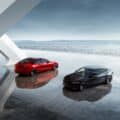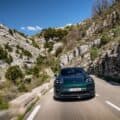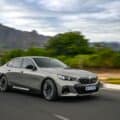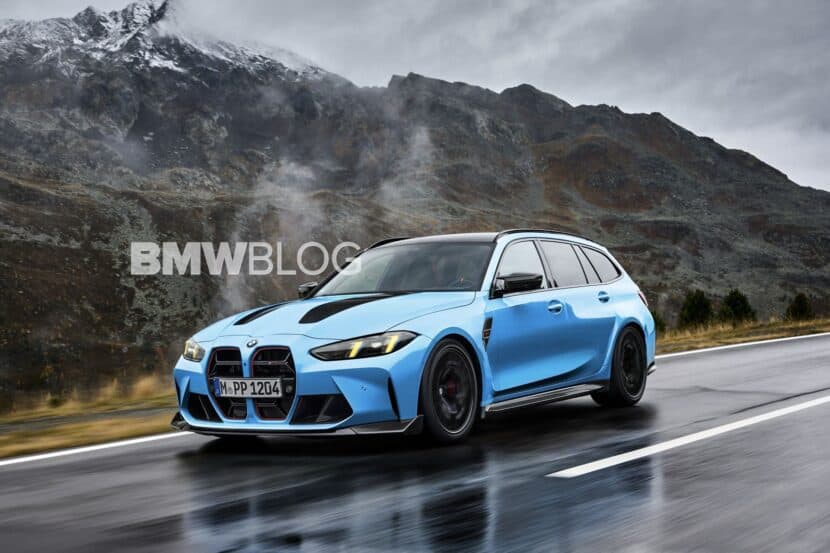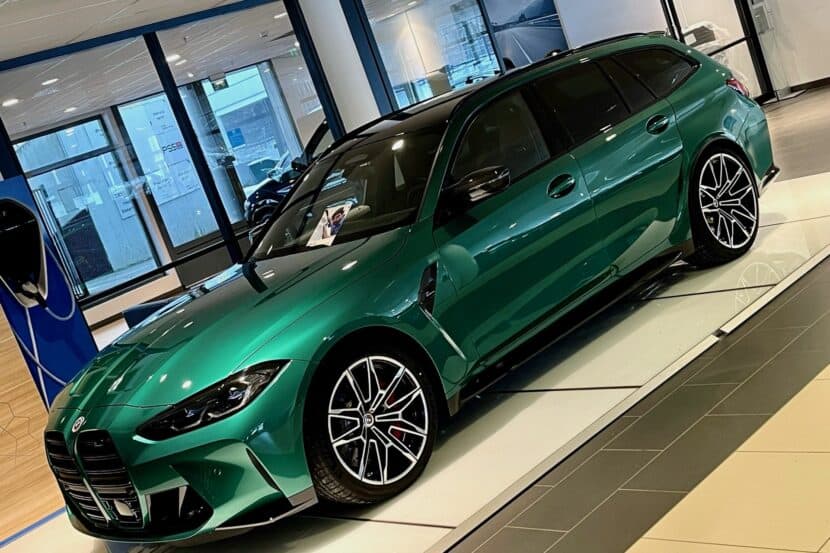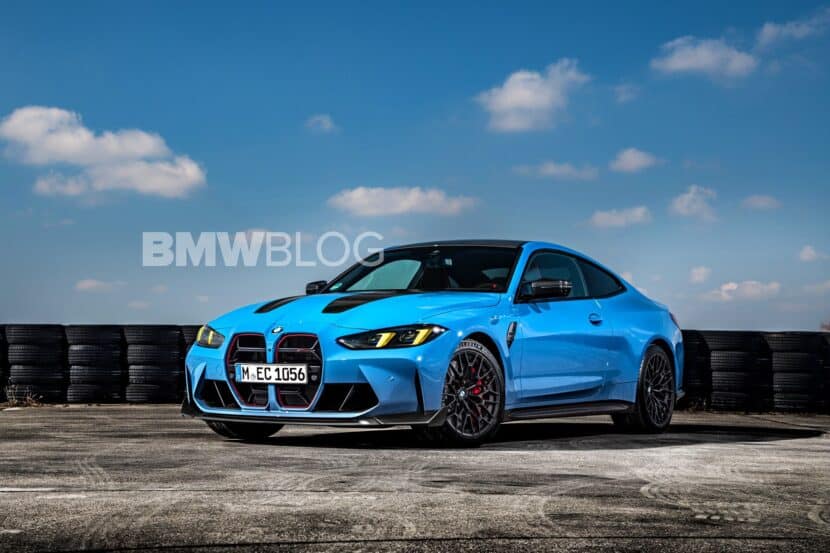M-Power sits down with two central members of the development team of the new BMW M3 and M4, product manager Christoph Smieskol and project manager Michael Wimbeck, to share the story of the two M brothers. Over the course of the interview, they offered first-hand information about the latest high-performance M cars and how they have made their way onto our roads.
Mr Smieskol, how did the development of the BMW M3 and BMW M4 begin?
Christoph Smieskol: We began by asking ourselves what we needed to do with the BMW M3 icon to ensure that it remained the benchmark in its fifth generation. What would we have to do to guarantee that this will indeed by the case?
Then we compiled a vehicle profile, put together from the point of view of the customer, in which we defined the market requirements. We based this process on our experience of the previous generation and its characteristics as well as the findings of customer surveys and market and competition forecasts.
From this data we were able to define the product requirements that satisfy both the requirements of an icon and the M philosophy.
So how would you describe the desired character of the new BMW M3 and M4?

Michael Wimbeck: We determined at a very early stage that we wanted it to be something like a lightweight athlete in a bespoke suit. We were not in search of a decathlete or a wrestler, but a lightweight athlete. The bespoke suit in this respect meant that it needed to be socially acceptable. So what we wanted was the best solution for a high-performance vehicle in this segment that also took into consideration social and environmental factors.
The BMW M3 and BMW M4 are sold all over the world. How much do customer expectations vary from country to country?
Christoph Smieskol: Fortunately, the BMW M brand is so strong that the expectations that customers have in the various markets are pretty consistent. They have a clear idea of what the M stands for, which means our market partners’ were enthusiastic about the positioning concept of the lightweight athlete in the bespoke suit at a very early stage; they were then happy to follow our lead throughout the entire development phase.
In concrete terms, what does the expression ‘lightweight athlete’ mean in the case of the new BMW M3 and M4?
Christoph Smieskol: The idea was to preserve the previous virtues of the M3 and to expand them: light-footed responsiveness coupled with dynamic and agile behaviour on the road. As a lightweight athlete, the focus was also on weight reduction and reversing the trend towards increasing weight.
Predictability and precision are very important factors that also characterised the previous vehicle. The driving precision of the BMW M3 E9x was already as sharp as a razor, so the question was how to improve on it.
Michael Wimbeck: Indeed, this was not a simple matter. When I took over the project, the BMW M3 E9x was still winning all the comparative tests against competitors, some of which were considerably younger.
Then we cast our sights over the nearly thirty-year history of the BMW M3. The BMW M3 E46, which was the model two generations before this one, was wilder and somewhat devil-may-care. It is the best-selling BMW M3 so far, so as far as its character is concerned, this car clearly had plenty going for it.
As far as I was concerned, this was the direction we had to move in: to combine the perfection of the BMW M3 E9x with the wildness of the BMW M3 E46.
Christoph Smieskol: We also wanted to sharpen its character some more and place it even more directly within the driving experience while at the same time giving the new BMW M3 and BMW M4 all the usual M virtues.
Mr Smieskol, you were previously also in charge of the BMW 1 Series M Coupé. Was the success of this car instrumental in your decision?
Christoph Smieskol: The BMW 1 Series M Coupé was a conscious attempt to go back to the roots that we first struck with the original BMW M3. The 1 M was only available with a single engine, a single chassis and a single gearbox, making it a highly purist driving experience. It made the car succinct. The customer was able to deal quite consciously with the vehicle substance. You could also call it, if a little exaggeratedly, ‘man against machine’.
With the BMW M3, the claim is quite a different one. Its power is higher and we have to offer the customer a bigger breadth of character traits. The BMW M3 und M4 are very fast on the racetrack but they are also suitable for driving long distances, quite laid-back. Our credo here is to be at one with the machine. Everyday usability was always one of the essential characteristics of the BMW M3 and also represents an important skill of the new BMW M3 and M4.
Mr Wimbeck, I know that you regularly follow a few blogs and also check out the occasional forum.
Michael Wimbeck: I have been following the online activities with great interest for several years, because it gives you a good picture of what fans and customers want and what it is that engages their enthusiasm. You can see what questions are being asked and what characteristics people expect from an M automobile. I am always pleased to note the enthusiasm and expertise with which customers and bloggers express themselves.
More than once in recent years, newly launched sports displayed an overall high degree of perfection. Many people noticed it but they appeared slightly bored by it all.

Michael Wimbeck: In response to this question, I can tell you about my own personal experience: I was travelling with Florian Staiger from Garching to the M engine development department in Munich, to discuss the subject of the motor’s characteristic curve. This took place in January and we were travelling in my BMW M3 E92. As always, I had pressed the M Button and was driving from Garching to the Preussenstrasse with all the settings, including SPORT PLUS, set to the keenest levels, in conditions with over four centimeters of snow.
After a while, I said to Florian: ‘despite the continuous snow cover, I can drive fully relaxed in the SPORT PLUS setting. And despite the fact that the BMW M3 doesn’t actually have to be able to under such conditions. That is what the EFFICIENT and SPORT modes are for. Why don’t we increase the separation between the driving modes, whether it be via the accelerator or the suspension/damping, even if the car ends up occasionally being more difficult to drive, for example in SPORT PLUS, in conditions that are actually inappropriate for the mode? After all, there are three modes that the customer is able to choose from to suit the prevailing road conditions.’
Christoph Smieskol: We wanted to turn the wheel back a little and give the car a few of its rough edges back, to turn its performance into something with more experience value. This is reflected in the fact that we still offer manual gear changing, because the customers still want to deal more consciously with the car’s operation, both with and without throttle blipping. We also wanted to enhance the response of the brakes, steering and chassis and make the vehicle and its reactions even more directly experiential. I can really feel what I am driving.
Was everyone immediately thrilled?
Michael Wimbeck: In a company like BMW AG, of whom BMW M GmbH is a subsidiary, it is not so easy to get a vehicle with such a unique position into serial production. We had to convince many people that a vehicle like this is even allowed to have such an independent character, because customers really expect this character.
There were several long discussions, in which I often heard, ‘Mr Wimbeck, we need to satisfy the most critical customers,’ to which I replied that from my point of view, it did not apply so absolutely to an M automobile. Because if we always wanted to satisfy the most critical customers, there would be times when we would be disadvantaging 99% of the other customers.
Once example concerns the sound when the waste gate is opened, whistling sounds could be heard. We said that this was characteristic and that it wouldn’t worry anyone if they heard that this was in fact a turbo engine whenever they took their foot off the pedal. In an M car, such behaviour is not only admissible, it is actually desirable.
Christoph Smieskol: The subject of sound is a very sensitive one in M automobiles. There are many operational noises that we regard as part of the car’s natural character. Whether these are intake noises, the sound of the exhaust valves opening, or gearbox sounds, they indicate to the driver what is going on in the car at any given moment. In this respect, it is not desirable to smooth out every single irregularity.
However, it takes a lot of effort to convince people. As Michael already said, people often think quite differently at BMW AG – simply because of the different demands that customers place on their vehicles. A BMW 320d might want to drive thirty or forty thousand kilometres a year with as little bother as possible. But our customers want to experience something every day. They are fascinated with the act of driving – so you can see that the demands placed on a car made by BMW AG are often completely different from those of a high-performance M automobile.
Michael Wimbeck: It was very important that everybody pulled in the same direction and that they all supported us when it came to convincing people. This is what ultimately allowed us to turn the character screw a little further.
And I believe that this was also one of the keys to our success: we set the right course at an early stage, and then everybody pursued that course with us.
All in all, the BMW M3 Sedan and the BMW M4 Coupé are both cars that attain the same levels as far as driving dynamics are concerned. For example, the BMW M3 Sedan now also has a CFRP roof. How did this come about?
Christoph Smieskol: When we began this project, we conducted a very precise analysis of our customers’ expectations: which ones drive a BMW M3 Sedan, which ones drive a Coupé, etc. This revealed, somewhat surprisingly, that Sedan und Coupé customers had almost identical expectations and requirements of their cars. It was certainly not the case the Sedan was seen as the more elegant and ‘reserved’ option. Both types can be seen just as frequently on the racetrack, for instance. The decision in favour of a four-door Sedan is made on the basis of family circumstances or personal preferences. This was a signal to us to create a pair of ‘non-identical twins’. We also made sure right from the start that not only the BMW M4 Coupé but also the BMW M3 Sedan and BMW M4 Convertible are each built with whatever lightweight components are possible.
bmw-









